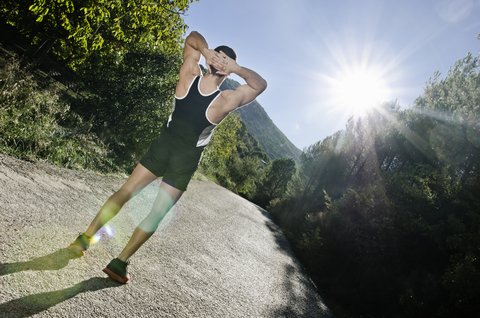No matter how much you prepare or how many years you’ve been hitting the trail, injuries can happen in the backcountry. It’s simply a fact of life.
The difference between an injury in your home and on the trail, however, is that when you’re miles from civilization, even a small injury can quickly become serious without proper care.
To help prevent your next trip from turning into an emergency situation, here are four tips on how to treat some of the most common injuries you’ll encounter while hiking and camping.
Blisters
Perhaps the most common thing you’ll face, blisters may not seem like a big deal, but they can easily make you miserable. Blisters are often caused by wearing the wrong size boot or wearing new boots on a long hike before properly breaking them in.
You don’t really want to risk popping a blister by walking around on it; this can lead to infection. Instead, clean the area and drain the blister with a sterilized needle, pushing it gently until the blister is drained. Then all you need to do is apply antibiotics and cover the site with a Band-Aid or blister pad.
Sprains and Twists
Your knees and ankles take a beating during long hikes, especially if you’re moving across unstable terrain or regularly negotiating tricky obstacles. Slip while maneuvering across unsure surfaces and you could easily twist or sprain something. Check the joint’s motion for discomfort and then see if you can put weight on it.
Take frequent rests to give the joint time to recover, as well. If you’re able to keep moving, I suggest wrapping the joint in an Ace bandage and taking it slow. Bonus Tip: Once you make camp, implement the RICE acronym—learned this during recovery from a soccer injury—which is Rest, Ice, Compression and Elevate.
Flesh Wounds
Mother Nature isn’t baby-proofed; there are tons of sharp objects out there and if you spend enough time on the trail, it’s only a matter of time before your arms and legs find them. Knowing how to treat this sort of wound can go a long way towards preventing infection, as well.
First you’ll want to control any bleeding by applying pressure with a clean gauze. Next, clean the wound with clean water, apply antibiotic and then cover it with a fresh gauze. Replace the gauze and check the wound a few times throughout the day and be on the lookout for itchiness, hard skin and heat at the wound site; these are potential signs that infection is setting in.
Burns
Campsites often mean campfires, which can sometimes mean burns. The first step here is to soak the burned area in clean, cold water right away and for a few minutes. Cover the burn with antibiotic ointment and apply gauze to prevent infection. Try to keep the affected area elevated, especially if you’ve burned any fingers or toes. If the burn is so bad that it reaches deep tissue or bone or covers a lot of your body, then it’s time to seek immediate medical attention.
© Maxriesgo | Dreamstime.com – Runner warming arms with sun flare








